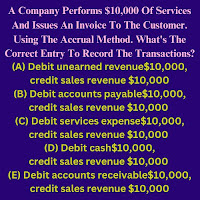The Allowance For Doubtful Accounts Is A Contra Asset Account That Equals:

The Allowance For Doubtful Accounts Is A Contra Asset Account That Equals To Total Uncollectible Accounts Reason: As we know that Allowance For Doubtful Accounts is a Contra Asset Account which is deducted from closing balance of Accounts Receivable on Balance Sheet in order to calculate the Net Realizable Value (NRV) of Accounts Receivable , so mathematically, we can say that: Net Realizable Value = Accounts Receivable - Allowance For Doubtful Accounts Net Realizable Value + Allowance For Doubtful Accounts = Accounts Receivable Allowance For Doubtful Accounts = Accounts Receivable - Net Realizable Value As Accounts Receivable - Net Realizable Value = Total Uncollectible Accounts So, we have the following result as shown below: Allowance For Doubtful Accounts = Total Uncollectible Accounts So, we can say that Allowance For Doubtful Accounts is equal to Accounts Receivable minus Net Realizable Value of Accounts Receivable which represent total estimated uncollecti...
